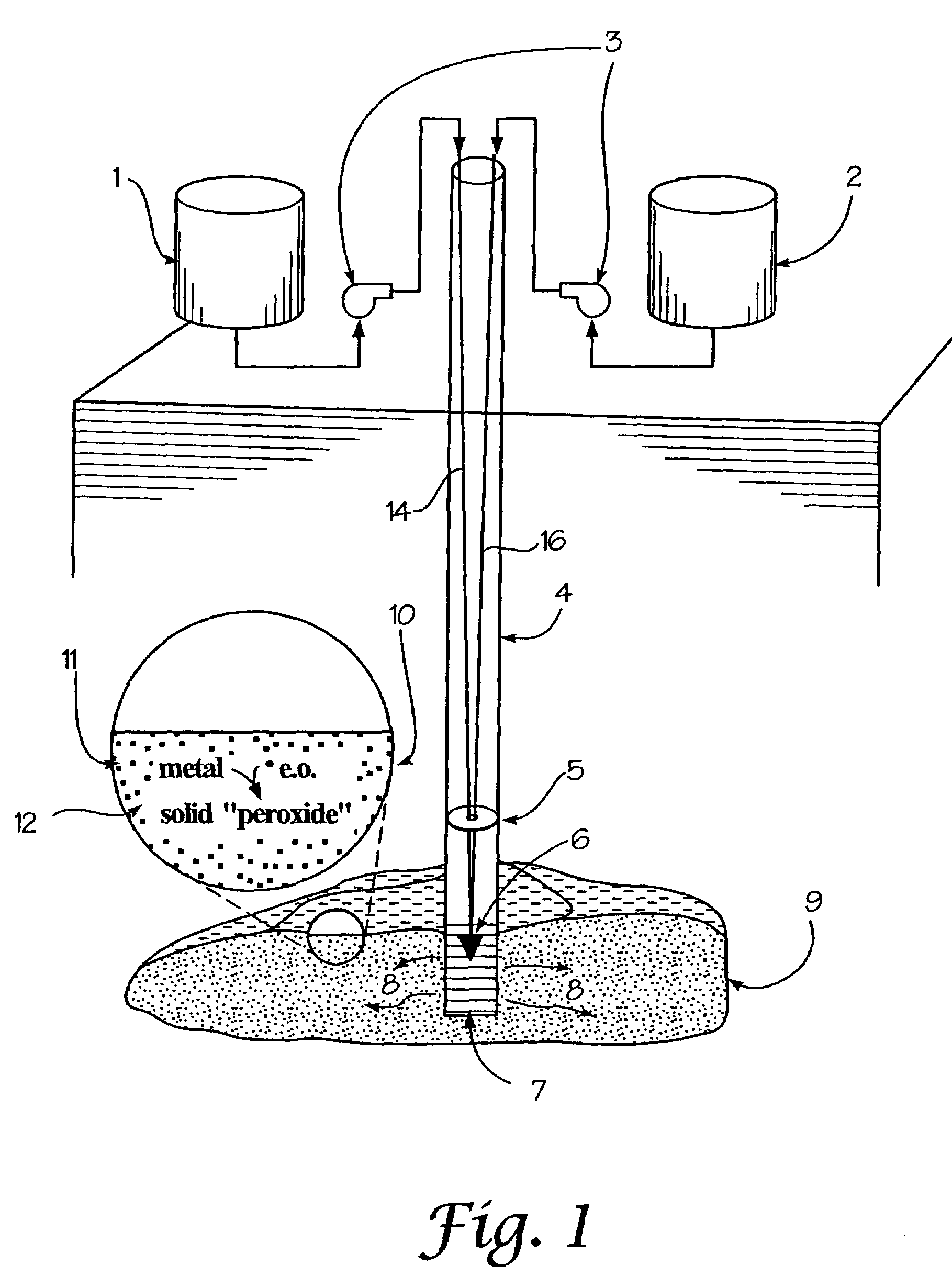In-situ generation of oxygen-releasing metal peroxides
a technology of metal peroxide and oxygen-releasing metal, which is applied in the direction of radioactive decontamination, water/sewage treatment by oxidation, nuclear engineering, etc., can solve the problems of contaminated groundwater plumes, inability to successfully decontaminate a single contaminated plume, and inability to achieve continuous pumping and treatment for months or years
- Summary
- Abstract
- Description
- Claims
- Application Information
AI Technical Summary
Benefits of technology
Problems solved by technology
Method used
Image
Examples
Embodiment Construction
[0029]Where oxygen is used to remediate contaminants in groundwater, the dissolved oxygen concentration is the primary determinant of biogeochemical conditions in subsurface systems. Furthermore, the aqueous solubility of oxygen is a significant limitation in systems where aerobic conditions are optimal or necessary for remediation. The concentration of oxygen must be high enough to effect the desired reactions and / or to enhance the growth and activity of biological agents. The oxygen must also be accessible to the agents, so it must be in a water-soluble form.
[0030]Dissolved oxygen can also be used to control the mobility of reduction—oxidation (redox) sensitive metals and radionuclides. Such metals and radionuclides are commonly found at a variety of sites such as coal pile run-offs, acid drainage from mine tailings, and other “leach based” sources. As noted above, the presence of oxygen in groundwater will enhance the formation of insoluble metal oxides from the harmful metals. T...
PUM
| Property | Measurement | Unit |
|---|---|---|
| concentration | aaaaa | aaaaa |
| concentration | aaaaa | aaaaa |
| energy | aaaaa | aaaaa |
Abstract
Description
Claims
Application Information
 Login to View More
Login to View More - R&D
- Intellectual Property
- Life Sciences
- Materials
- Tech Scout
- Unparalleled Data Quality
- Higher Quality Content
- 60% Fewer Hallucinations
Browse by: Latest US Patents, China's latest patents, Technical Efficacy Thesaurus, Application Domain, Technology Topic, Popular Technical Reports.
© 2025 PatSnap. All rights reserved.Legal|Privacy policy|Modern Slavery Act Transparency Statement|Sitemap|About US| Contact US: help@patsnap.com



